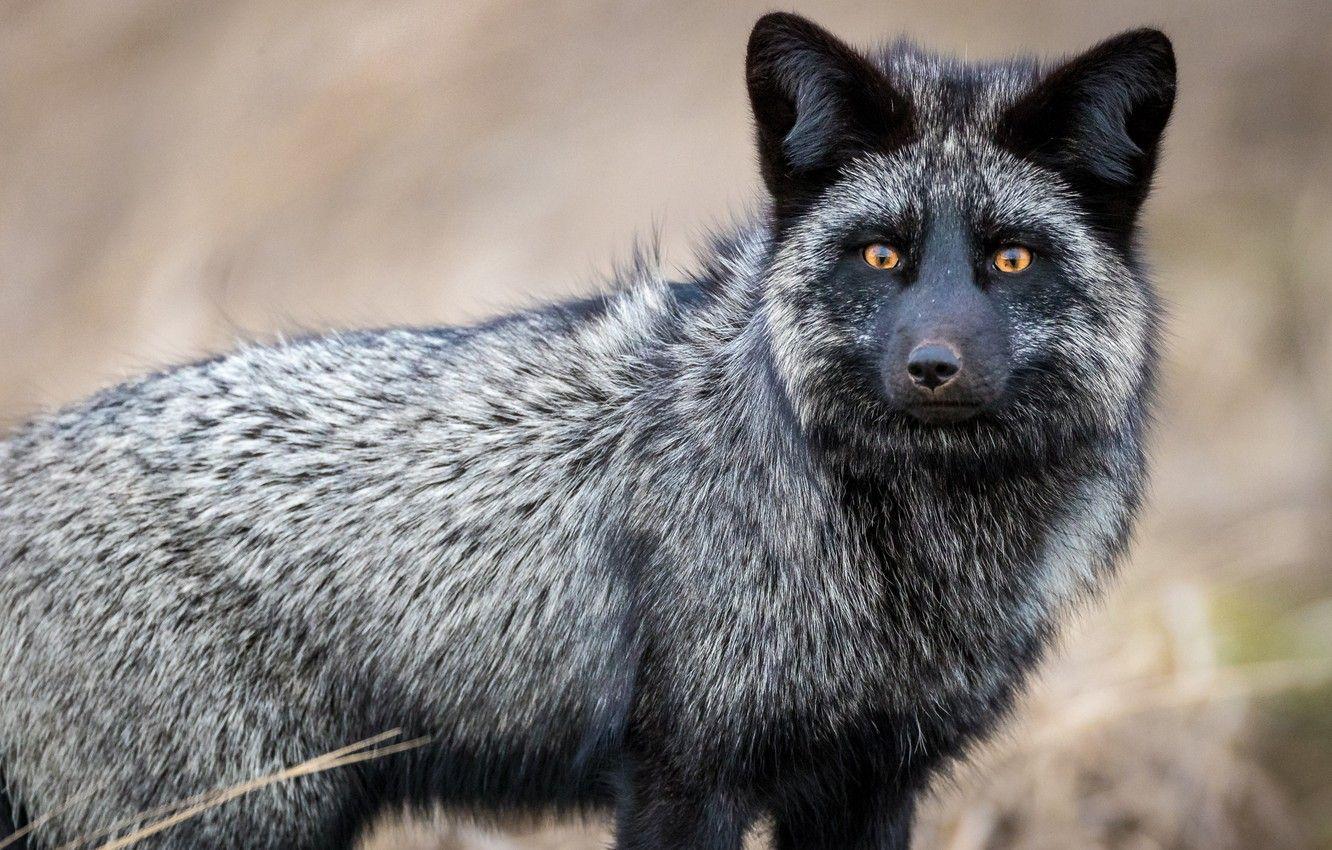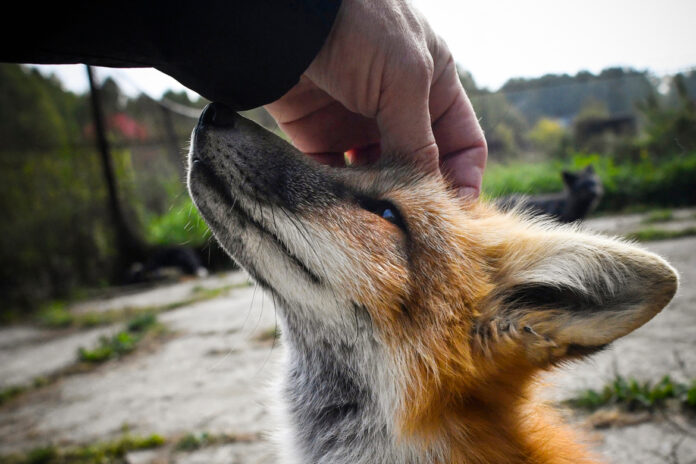Last Updated on August 2, 2021 by Fumipets
Pet foxes are adorable, amusing, and cunning little escape artists. They have a deep attachment to their owners. They resemble domesticated dogs as members of the canine family. Their personality is more aloof than that of a cat. They are the only canine species that can climb trees with ease. The majority of foxes kept as pets are not tamed (only one type is). The majority of foxes kept as pets have been hand-raised or socialised from birth.
Female foxes have a better chance of learning to utilise litter boxes than males. Foxes like digging, which may cause harm to carpets and potted plants inside.
Exotic pets are governed by various regulations in each state. Make sure you can own a pet fox in your area since it may be classified “a wild canine, tiny canine, non-domesticated species, exotic animal, or local wildlife.”
Examine ten fox species that have been maintained as pets and learn why some are better friends than others.
Fennec Fox
/fennec-fox-01-f56044b427f64d64a263417db3c23a13.jpg)
The most common kind of pet fox is the big-eared fennec fox (Vulpes zerda). Fennec foxes are privately bred throughout the United States and may be purchased for many thousand dollars. It’s an excellent option for a pet fox because of its tiny size, long lifespan, and charming disposition. It may not be ideal for families with young children or other pets, since they can be nippy. It is fragile and has to be protected from harsher roommates as the world’s tiniest fox breed. Whimpers, growls, shrieks, wails, whines, barks, squeaks, and howls are among the vocalisations it may make.
Red Fox

Although the red fox (Vulpes vulpes) is not as popular as the fennec fox as a pet, those who own one claim it is as charming as a house cat. They have a few disadvantages since they are not tamed. Their most serious flaw is that they have the stinkiest urine of all the fox breeds. Spaying or neutering your dog may assist to minimise the odour. They also have a proclivity for digging and need much more space than other breeds to dig and play. Silver foxes are a domesticated red fox type that has only been produced in Russia. The foxes’ urine odour has been decreased, and their general disposition has improved, thanks to this tamed fox programme.
Domesticated Silver Fox

The silver fox, also known as the tame Siberian fox, tame Arctic fox, Sibfoxes, domesticated fox, and other names, is a genuine tamed fox. It is also known as Vulpes vulpes and is a colour variant of the red fox. These foxes have somewhat distinct features and genetic variations from red foxes thanks to a selective breeding effort in Russia. Only Russia can provide a genuine tamed silver fox. Obtaining one may be complicated and expensive, costing up to $10,000.
These foxes have a dog-like demeanour and emit very little odour. Tail-wagging when pleased, barking and vocalisation and ear floppiness was among the canine characteristics bred into silver foxes. The care of these foxes is similar to that of other fox breeds. Consider a fennec or grey fox if you’re searching for a fox that’s simpler to care for.
Arctic Fox

The arctic fox (Vulpes Lagopus) looks a lot like the red fox, although it’s smaller and less popular as a pet. It is sensitive to high temperatures and may overheat more easily than other foxes since it has evolved to live in the Arctic. It may be essential to take precautions to keep it cool. Arctic foxes are overbred in the United States because of a limited breeding pool, and some have genetic abnormalities.
Its urine and scenting glands, like those of red foxes, make it an unpleasant pet. Because it smells marks its territory, it is not well adapted to live inside. It also enjoys playing in the sand and mud, so its litter box may become more of a fun sandbox than a restroom. When it comes to foxes, they may be very nice.
Gray Fox
Gray foxes (Urocyon cinereoargenteus) were formerly the most prevalent fox in the United States. Human encroachment and deforestation have enabled red foxes to become the most prevalent species throughout the ages. Gray foxes are the nicest and calmest of all the fox species. Most foxes are cautious of strangers, but grey foxes are friendly and loving with the majority of humans. Even while grey fox urine is not as smelly as other kinds, most other foxes will never be completely housebroken. They may cause havoc in the home by ripping up carpets, establishing territory, and eating or chewing on items they shouldn’t.
Bat-Eared Fox

The bat-eared fox (Otocyon megalotis) is a tiny species that are difficult to locate and maintain. These foxes are endemic to Africa’s lowlands. They are mainly an insectivorous species in the wild, with termites and dung beetles accounting for 80% of their natural diet. They may be given meat and veggies as pets. The proprietors of these foxes have kept them inside. Bat-eared foxes, like other fox species, need an escape-proof cage. This fox species is also prone to digging and scent marking.
Swift Fox

Swift foxes (Vulpes velox), a tiny species of fox native to the grasslands of North America, are an uncommon discovery in the exotic pet trade. This species is considered to have a more friendly disposition than fennec foxes and is less loud and active. This species, according to some accounts, is simpler to teach to use a litter box. Swift foxes eat everything. Grass, fruits, small animals, carrion, and insects are all part of its diet. This species may survive up to 6 years in the wild. Their life expectancy as pets may reach 14 years.
Kit Fox

The fast fox (Vulpes macrotis) is closely related to the kit fox (Vulpes macrotis). It is endemic to southern North America and is approximately the same size. It is a naturally curious animal that has minimal fear of people and may develop strong attachments to its owner. It is an omnivore in the wild. It should be given a range of foods as a pet, including high-quality, protein-rich dog food, cooked or raw meats, vegetables, and fruits. Hidden crickets or mealworms may be used as special rewards to encourage their foraging instinct.
This species makes very little noise, but when it does, it may emit low barks or growls. This is one of the simplest fox species to litter or pee pad train. Because foxes like climbing, provide them with a cat tree or cat condo. Allow this fox to dig holes in a sandbox, since this is one of its favourite pastimes.
Pale (Pallid) Fox

The pale fox (Vulpes pallida) is a Sahara Desert native. In the exotic pet trade, this species is another rarity. If you locate one, it will almost certainly have to be imported, which may cost upwards of $4,000. Pale foxes having a low odour, are simpler to teach than fennec foxes, and are generally sociable. Like fennec foxes, they are noisy and produce loud, high-pitched screeches.
Corsac Fox

Northern Asia is home to the Corsac fox (Vulpes corsac). They are more often kept as pets in the United Kingdom than in the United States. In terms of habit, care, and look, this species is often likened to fast foxes. Corsac foxes are considerably simpler to toilet train than other foxes, although they do scent marks and have smelly urine. The fox’s coat can stink if it is not washed on a regular basis. Give this species a climbing structure if you keep it at home. The fox will lose its coat extensively once a year in the spring.


















